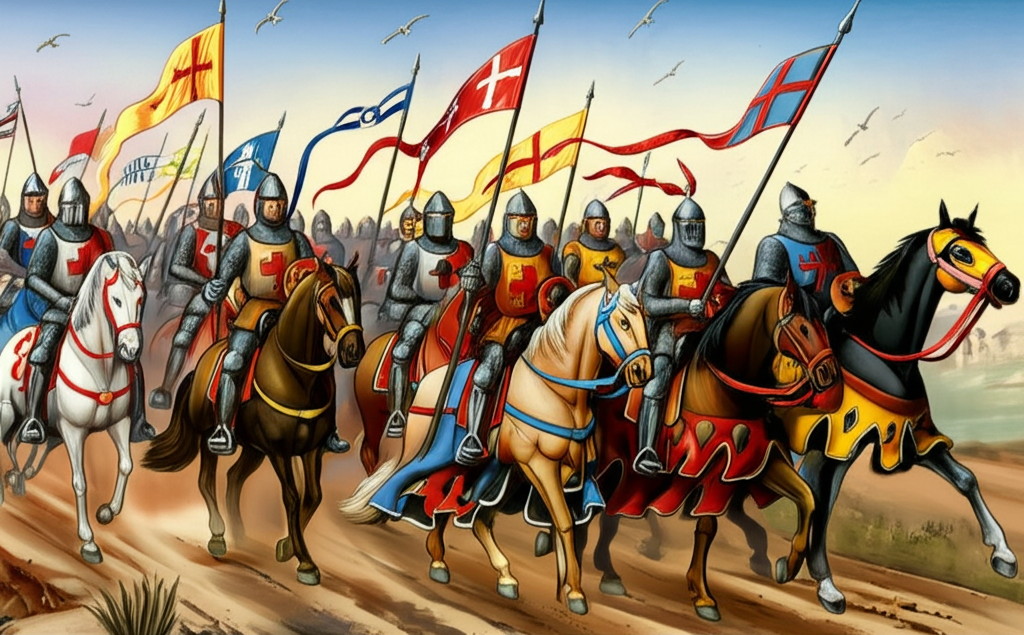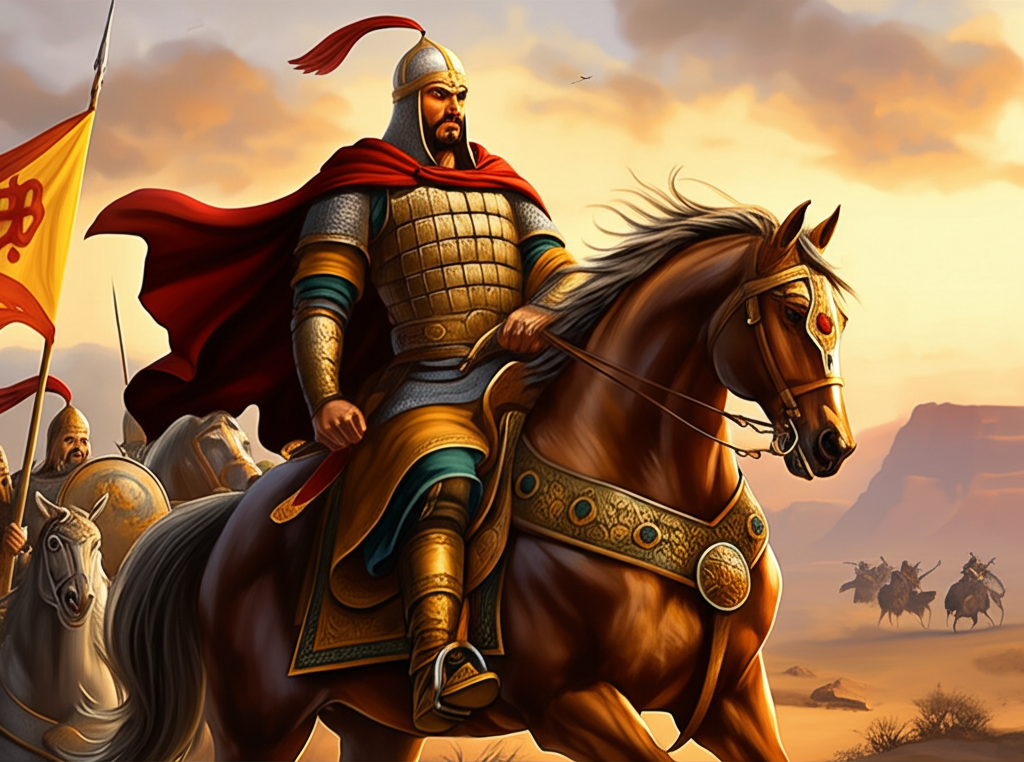


During the Middle Period, Western Christendom experienced:
Interesting similarities can be observed between Islamic and Western civilizations during this era. A myriad of polities, from city-states to kingdoms/sultanates to empires, as well as power struggles, shifting alliances, and the rise and fall of dynasties are characteristic of the period. At the same time, both civilizations had a central religious figurehead (caliph/pope) who was acknowledged by all as the religious authority, but not obeyed in other matters. Additionally, both civilizations were given a new boost by energetic groups from the borderlands: the Vikings and Normans in Europe, and Turkic and Mongolian tribes in the Muslim world (Saharan nomads played a similar role in Africa).

Differences between the two civilizations are also noteworthy. Feudalism emerged in Western Europe during this period. The majority of people (over 90 percent) in pre-modern settled societies were peasants who worked the land, and the economies relied on agricultural surplus. Before serfdom arrived in Europe, peasants were predominantly free men and women, similar to the Muslim world. Though farming life was challenging, the peasants in those times had access to extensive "common" lands: abundant forests, and rivers where they were free to gather food and hunt.
However, around the beginning of the Middle Period, some greedy landlords were keen to get the peasants to produce more crops. The common lands ('Commons') were taken away from the people (through 'privatization', i.e., taken into private ownership). This forced peasants to focus solely on farming, as they could no longer hunt and fish in the wild. Through various means, peasants gradually lost their freedoms and became "enserfed"— they were stripped of their rights and forced to work for their lords. The peasants had no access to independent justice, relying solely on the lord's own "court." Thus, the poor masses of Western Europe saw their freedoms stripped away, and were reduced to 'virtual slavery', under the rule of lords and their armored knights, who lived in great stone castles that were springing up everywhere.
In contrast, there was no serfdom in the Muslim world. The peasants were free men and women who owned their land, or worked as tenants or hired labourers. Everyone had access to the independent justice of the local qadi.
In 1099, Pope Urban called for all Catholics to unite in a Holy War, known as a Crusade, against the "Saracens" (a Roman term for Muslims). The Muslims were posing a huge threat to the Roman Empire in the East and, in desperation, they called upon the Pope for assistance.
The response to the Pope's call-to-arms was massive and unexpected. Several factors converged in Europe at that time, that may explain the huge attraction of the Crusades, which dominated Western Europe for centuries to come:
The Crusades were a mess. The first group to emerge was a disorganized band of common people led by Peter the Hermit and Walter the Penniless. Firmly believing that they would soon be completely forgiven, this 'People's Crusade' decided they may as well commit a few sins along the way. They carried out horrific acts of violence, especially targeting Jewish communities along their route. They never reached Muslim lands, and instead decided to fight against the Romans, who soon put an end to their unfortunate expedition.
The next army, the "official" First Crusade comprised experienced soldiers and knights from across Western Europe. The Roman emperor, Komnenos, made their leaders swear sacred oaths promising to hand over any town captured from the Muslims to the Empire. The Crusaders captured the town of Antioch first, but they immediately broke their oaths. Bohemund, a cunning Norman, argued that Komnenos had failed to fulfill his side of the agreement by not sending reinforcements, thereby rendering the oaths invalid. The Crusaders went on to capture Edessa, Jerusalem, and Tripoli from the Muslims. At that time, Muslims were preoccupied with internal conflicts, and some even formed alliances with the Crusaders against Muslim rivals.

After the success of the First Crusade, kings and princes embarked on the Second Crusade. However, the Muslims had united under a new leader, Salahudeen al-Ayyubi, who defeated the Christian armies and recaptured Jerusalem. In contrast to the massacre inflicted by the Crusaders when they initially took the city, Salahudeen treated the entire "Frankish" population with tolerance and magnanimity.
The Third Crusade, led by Richard the Lionheart, failed to recapture Jerusalem but achieved the capture of Acre. The Fourth Crusade, in 1206, became a significant embarrassment as the Crusaders decided to attack the Romans again and sacked Constantinople. Constantinople was soon recaptured by Roman forces, and the Muslims eventually took back all of their captured territories as well.
The Crusades exposed Western Europeans to the advanced Muslim civilisation. Other contacts also took place through Muslim Andalucia, Norman Sicily, and Muslims' trade with the Italian city-states. The rational and scientific spirit of the Muslim world began to gradually seep into the West.